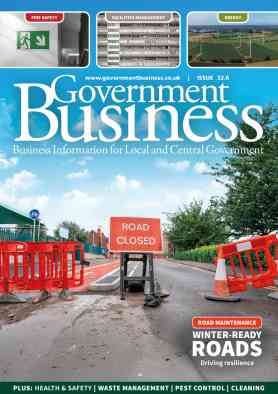How automation is changing the public sector for the better
Sascha Giese looks at what the 'rise of the robots' means for the UK public sector and the challenges the sector will face in keeping up with this growing trend
With a recent World Economic Forum report predicting half of all work tasks will be handled by machines in 2025, the public sector can benefit hugely from an increase in efficiency caused by more integration of automation. Rather than employees being concerned their jobs will be lost to machines, this news should be seen as encouraging that the public sector can use AI to improve the services offered to the public. This year in particular, the benefits of automation have never been clearer, as organisations have seen how this technology can provide less face-to-face contact when necessary, for example.
However, the transition to implementing automation will take thought. But if changes can be introduced, organisations will see increased speed and efficiency, and employees will be able to spend more time working directly with other employees and the public to ensure they receive the assistance they need.
The ‘Rise of the Robots’
Society is increasingly reliant on online services to obtain information and complete tasks at the touch of a button, and the pandemic has only served to accelerate this. As the private sector continues to raise the bar on efficiency and customer service, the public sector is also stepping up its game, and automation is a big part of this.
Members of the public want the same experience from the government and local authorities’ services as they do from online retailers and businesses. For example, in some situations, citizens may have to print off a form from a government website, fill it in by hand, and post it to the relevant department. An employee in the department has to open all the mail, sort through forms such as these, and scan them into their system to be processed. If these types of manual activities were supported by technology processes from the start—in other words, if the form itself was online, and the system could initiate the next action based on the user’s responses to questions—this would have a massive impact on efficiency.
The public sector has limited resources in comparison to the private sector and, after the pandemic, arguably even less than before. But as public demands for innovation are growing, any form of automation that can be introduced is an obvious answer to this.
Keeping up with this growing trend
Knowing automation is the answer is one thing—taking steps to implement it is another challenge altogether. One of the biggest obstacles the public sector faces on this journey is attracting the right people to integrate automation into existing processes and educating other employees on the new skills they need to learn to manage this. The public sector can rarely match the salaries of the private sector, so driving innovation is difficult.
Building a business case for this is also important. Senior management and budget holders need to be confident investing in technology such as automation is going to make enough of an impact to be cost effective. IT leaders therefore need to outline what they anticipate automation will bring to the organisation and how it can benefit the wider public.
Benefits: What can automation do?
The aim of introducing automation into the public sector is to increase efficiency and reduce costs in the long term. However, lack of awareness about automation and its benefits can lead to some organisations pushing this further down the priorities list. There are many advantages this technology can bring, including:
• Supporting cost reduction—Automation can be hugely cost-effective if it’s introduced in the right areas. Employees can focus more on the crucial aspects of their job reliant on human input or interaction, while the technology handles the minor tasks and even speeds them up.
• Meeting public demands—As mentioned, most citizens are used to working online and using digital services and expect the same level of speed and intelligence from public sector services as from any private company website. Automation can help make services quicker and smarter, like a chatbot that can answer a citizen’s questions quickly 24/7 when the request is simple, leaving human employees to spend more time to assist people with more complicated challenges.
• Boosting productivity—In the same vein, employees will ultimately become more productive once automation is fully integrated. By not having to spend time on smaller, simpler tasks a machine can complete, they can focus on bigger jobs with fewer interruptions.
• Increased learning opportunities—When not snowed under by the often more tedious tasks, employees may also have increased time in their day to expand their knowledge and/or skills in different areas, driving their career forwards and hopefully increasing their enthusiasm in topics they have a real passion for.
Put simply, the ‘robot revolution’ is an opportunity the public sector should grasp with both hands. Though budgets are always tight, automation can quickly show an ROI and overall help organisations to be more efficient and productive and support employees in delivering a better ‘customer experience.’
Sascha Giese is Head Geek™ at SolarWinds.


